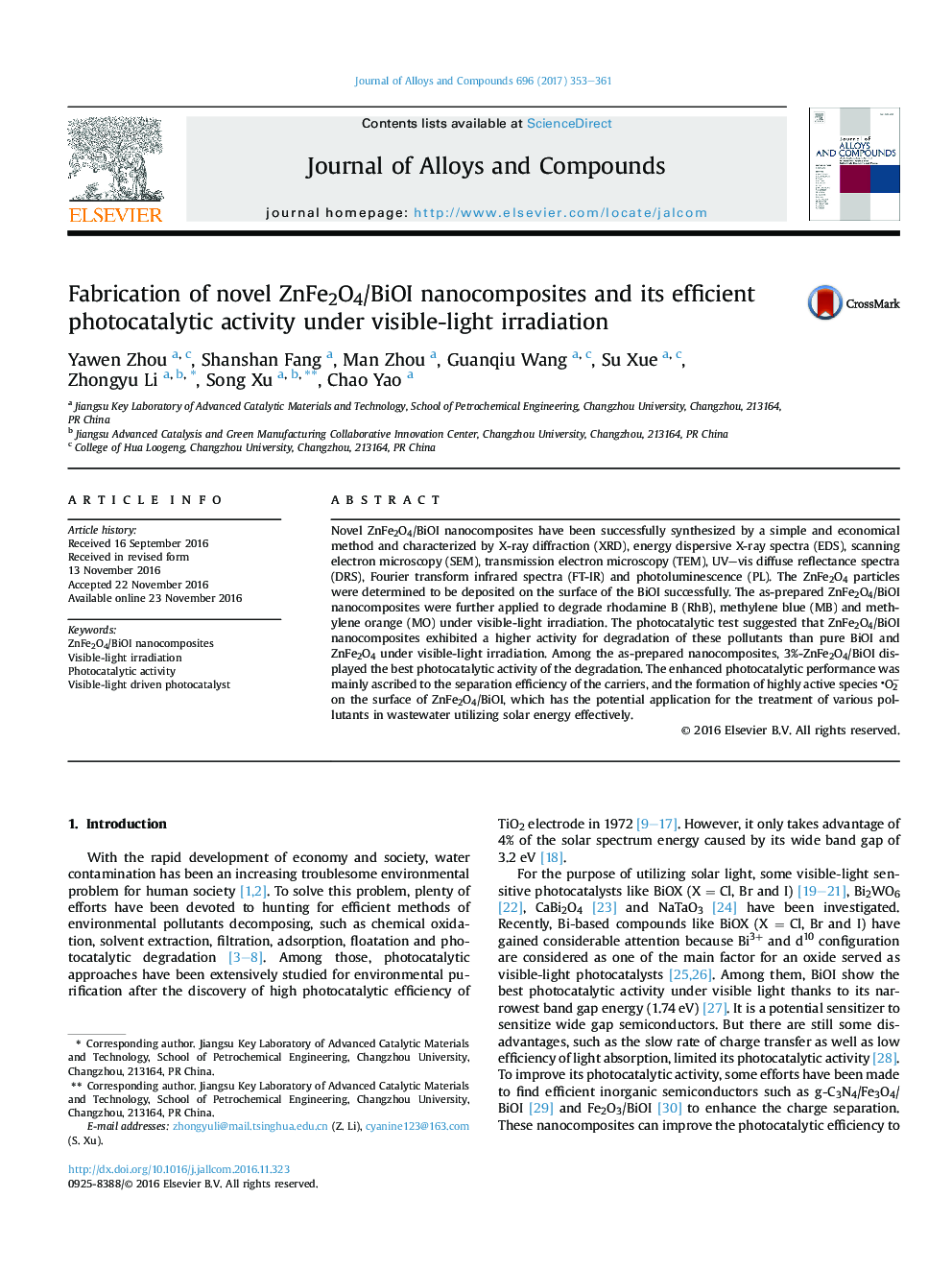| Article ID | Journal | Published Year | Pages | File Type |
|---|---|---|---|---|
| 5461310 | Journal of Alloys and Compounds | 2017 | 9 Pages |
Abstract
Novel ZnFe2O4/BiOI nanocomposites have been successfully synthesized by a simple and economical method and characterized by X-ray diffraction (XRD), energy dispersive X-ray spectra (EDS), scanning electron microscopy (SEM), transmission electron microscopy (TEM), UV-vis diffuse reflectance spectra (DRS), Fourier transform infrared spectra (FT-IR) and photoluminescence (PL). The ZnFe2O4 particles were determined to be deposited on the surface of the BiOI successfully. The as-prepared ZnFe2O4/BiOI nanocomposites were further applied to degrade rhodamine B (RhB), methylene blue (MB) and methylene orange (MO) under visible-light irradiation. The photocatalytic test suggested that ZnFe2O4/BiOI nanocomposites exhibited a higher activity for degradation of these pollutants than pure BiOI and ZnFe2O4 under visible-light irradiation. Among the as-prepared nanocomposites, 3%-ZnFe2O4/BiOI displayed the best photocatalytic activity of the degradation. The enhanced photocatalytic performance was mainly ascribed to the separation efficiency of the carriers, and the formation of highly active species O2â on the surface of ZnFe2O4/BiOI, which has the potential application for the treatment of various pollutants in wastewater utilizing solar energy effectively.
Related Topics
Physical Sciences and Engineering
Materials Science
Metals and Alloys
Authors
Yawen Zhou, Shanshan Fang, Man Zhou, Guanqiu Wang, Su Xue, Zhongyu Li, Song Xu, Chao Yao,
